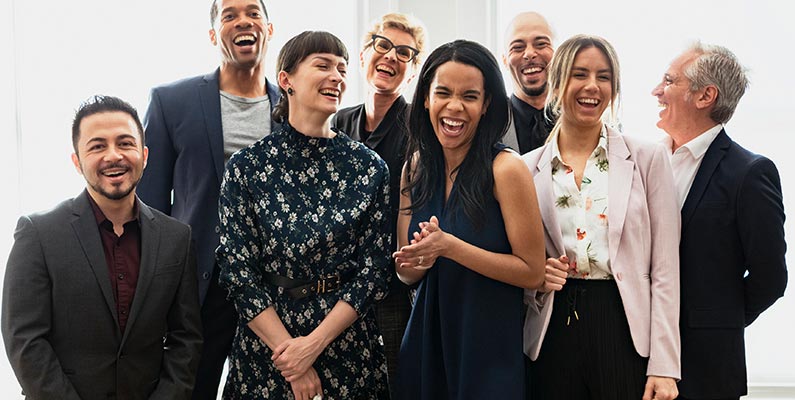Teamwork Articles
Recent
Popular
Teamwork is the process of a group of people collaborating and working together to produce a specific goal. Collaboration is often associated with the workplace. The employees might work together on a project, participate in their assigned roles, and present a final result. Teamwork is also present in school environments and in family dynamics, where people can work as a collective to make something happen. In a productive team situation, the members of the group can rely on one another’s strengths to produce a positive outcome. Here you will find articles that define what teamwork is, how the best groups of individuals work together, what obstacles people face as members of a team, and how to get the most out of working as a group.
More Teamwork articles
Explore more on Teamwork
Medically reviewed by Laura Angers Maddox, NCC, LPC
Teamwork can be defined as a collaborative effort of multiple people to accomplish a common goal. An integral component of success in the workplace, teamwork usually involves each person in the group playing a specific role that meets the agreed-upon objective. An effective team may complete their efforts in the most efficient manner possible using coordination and collaboration. The ability to work as a team does not always come naturally, but it is a skill that can benefit each individual and the group as a whole. A therapist can help you become a better teammate by cultivating healthy communication and collaboration skills.
The history of teamwork
The modern concept of teamwork, or teambuilding, may have emerged in the early 1900s, with social scientists hired by factory owners researching how to increase productivity in the workplace. One such project was known as the Hawthorne Effect, in which women were observed on the production line to see how teamwork improved output. While the research actually revealed that individuals tend to modify their behavior while being observed, this study was one of the first steps in investigating teamwork and its relationship to productivity.
This concept of teamwork evolving from the assembly line likely contributed to the birth of the corporate model, where organizations often saw the value of teamwork or working together. Not everyone can or should complete every step of a goal individually. They found that it could be more important for people to specialize in certain steps along the way to accomplishing that goal.
How teamwork is effective
Practical teamwork can be useful because you generally have a group of people working together in a unified effort to achieve a goal or complete a project. While the collaborative group effort can be crucial in the success of the team, an individual’s contribution to the cause may be equally important.
Within the organization, there usually needs to be both independence and leadership. Each team member generally needs to know what their job is, and they need to be able to do their job well. Without effective leadership and clear expectations of team members, the project may fail. The team usually also needs to have realistic goals that are attainable in a reasonable amount of time.

Types of teams
When you hear the term “team,” you may think of a sport or job that consists of a group of people working together to accomplish a goal or objective. However, football teams and advertising groups are not the only kinds of teams that exist. For example, a family unit can be a team, as can a married couple. Simply put, what makes up a team can be two or more people working together toward a common goal. Teamwork can be an integral part of our lives, and at one point or another, we will likely be a part of a team.
Qualities that make up a healthy team
- Open Communication - The team members can talk to each other honestly and with mutual respect.
- Coordination - Each member of the team is generally aware of what the others’ roles are on the team, and they support each person doing their part.
- Independence - The team members can do separate jobs that reflect their unique talents and attributes, but they can also work together.
- Interdependence - People tend to be trusting of one another, and they usually depend on each other to achieve a common goal.

Benefits of online therapy
Online therapy can be an excellent resource for those who are interested in cultivating better teamwork skills. For instance, couples who wish to become a better team may benefit from working with an online couples therapist who can help them improve their communication, collaboration, and conflict-resolution efforts. Online therapy can be convenient because sessions are often available outside of typical office hours, potentially making it easier to schedule appointments that fit into each partner’s existing routine.
Effectiveness of online therapy
Online therapy is generally supported by research as a highly effective alternative to traditional in-person sessions. A 2021 study reported that couples participating in online therapy usually believed they had a stronger bond with their therapist and partner at home during online therapy sessions.
Takeaway
When two or more people work together to achieve a common goal, they can be considered a team. Teamwork usually plays a role in nearly everyone’s life, so it can be beneficial to ensure that you are a good teammate, whether at work or with your partner. Online or in-person therapy can be an effective way to target any potential weaknesses and help you become the best teammate you can be.